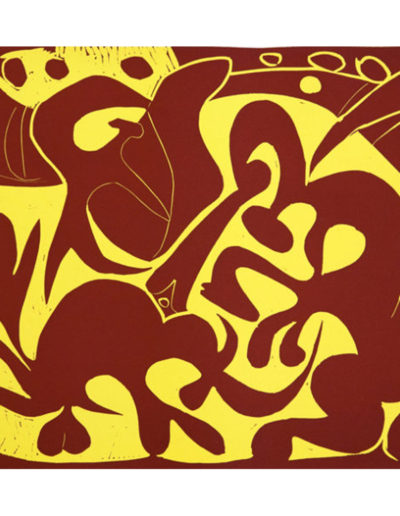Linocutting
Linocutting is based on the use of linoleum, a floor covering. Artists who started using it in the 20th century chose a particular linoleum, linoleum armoured, thicker than other types of linoleum. These are the expressionsGermanists who introduced the technique, quickly followed by the Russian constructivists. Kandinsky and Rodchenko are known to have worked with linocuts.
LinolThe softum, softer than hardwood, allows for a detailed and light line and good print quality due to its surface. It also allows a good colour treatment because it is a rather neutral support. The use of linoleum is becoming more and more popular. in the years 1920 : artists are inspired by technological progress and are looking for a suitable medium to transcribe the impression of modernity's speed and the dynamics of a constantly changing world.
In France, Pablo Picasso and Henri Matisse are following this movement. Picasso made his first linocuts in 1939 and pushed back the limits of the technique by constantly reworking the blocks of colour.

The image is drawn in pencil or felt pen on the lino. The blank areas will be blank to the printing and the marked areas will be inked: this is the principle of the savings size, used during linocutting and woodcutting.

The artist starts engraving with a hand tool. The tool must be held in the hollow of the hand while the index finger drives the rod and controls the pressure applied. on the drawing. The blade of the tool creates linoleum spirals.

A layer of ink is applied to the plate with a roller several times so that there is enough ink. The plate is completely covered with ink, except for the previously engraved hollows.

The paper printing step then begins. The paper is placed on the plate. If printing is still too pale, he's possible to continue rubbing the back of the paper to strengthen it. The artist may or may not keep his plate, and obtains his linocut on the printed paper.



